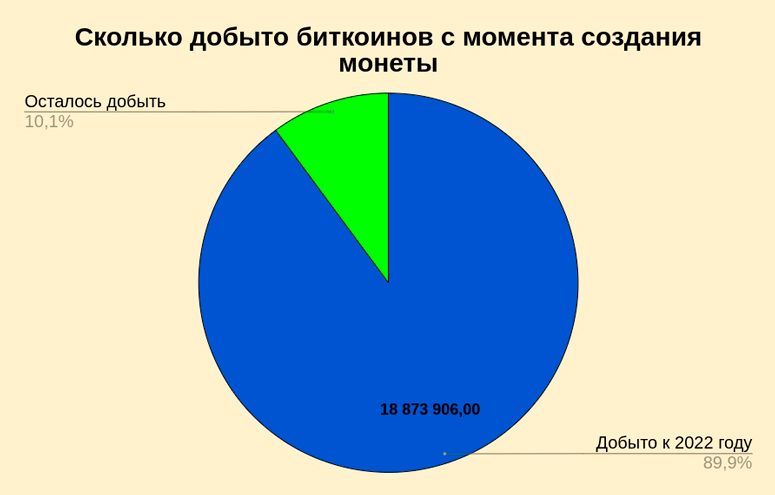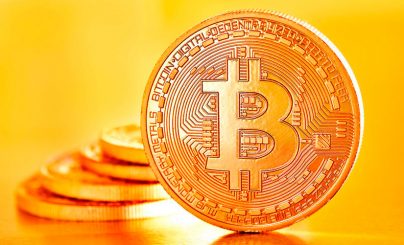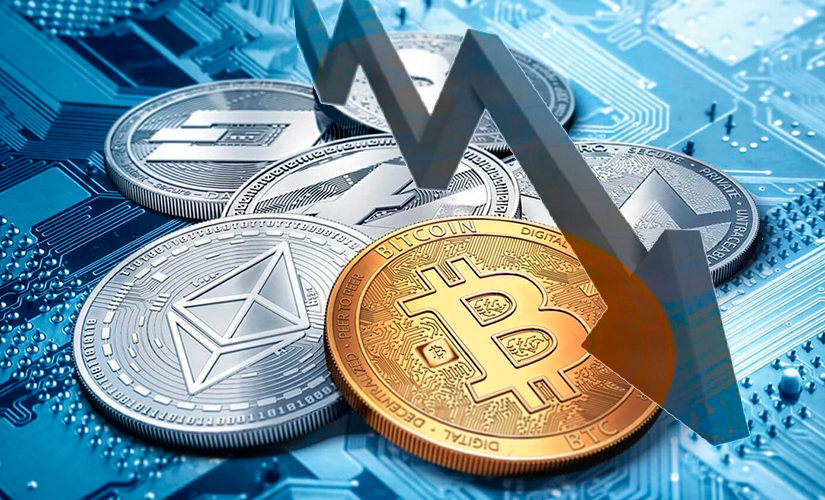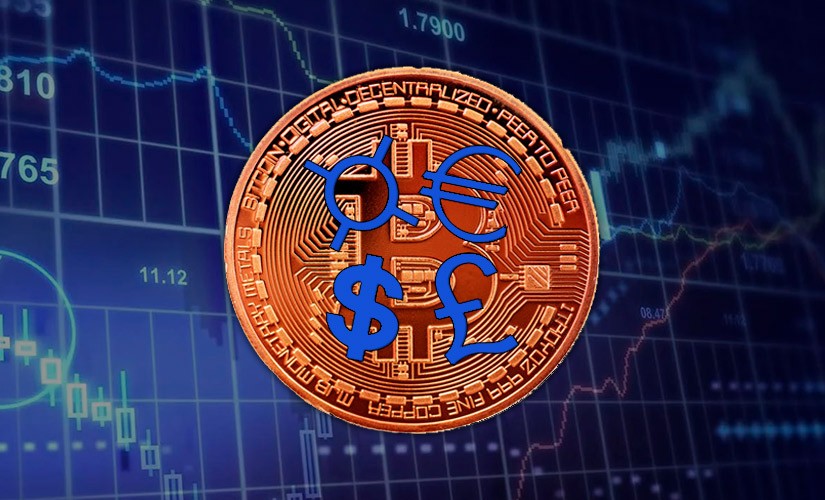According to the data at the beginning of 2023, there are more than 17 thousand coins and 토큰 in the crypto market. They differ in purpose, consensus algorithms, issuance and other parameters. The first cryptocurrency has a peculiarity – the number of bitcoins is limited to 21 million. This is embedded in the structure of the project by the developer – Satoshi Nakamoto. In the community differently explain the reason for this number of coins.
How much has already been mined and remains to be mined BTC
The main problem of fiat money is its susceptibility to inflationary processes. Over time, the purchasing power of the currency falls. Inflation is a normal process that helps the economy develop. It has an optimal rate of up to 6% per year. Inflation with a large value can destroy the financial system of the state.
Fiat money is issued by the government with the help of institutions – the Central Bank and other regulators. The issue of national currency is not limited. The state can print as much money as necessary. At the same time, the value of currency will fall, because it is not backed by anything tangible. To fight inflation, the government takes different measures – reduces the interest rate, conducts monetary policy.
Satoshi Nakamoto took into account the economic component when developing the first cryptocurrency. To combat depreciation, he limited the number of bitcoins to 21 million coins. This is an inaccurate value. The correct number is 20,999,999,9796.
The Bitcoin network uses the 작업 증명 consensus confirmation algorithm. Miners do the work – they do the math. Whoever found the 해시 value first gets the right to contribute another block to the network. At the end of 2021, 18,873,906 coins have already been mined, which is 90% of the issue.
5020 $
신규 사용자를 위한 보너스!
바이비트는 암호화폐 거래를 위한 편리하고 안전한 조건을 제공하며, 낮은 수수료, 높은 수준의 유동성, 시장 분석을 위한 최신 도구를 제공합니다. 현물 및 레버리지 거래를 지원하며 직관적인 인터페이스와 튜토리얼을 통해 초보자와 전문 트레이더를 돕습니다.
100 $ 보너스 획득
신규 사용자를 위해!
암호화폐 세계에서 빠르고 안전하게 여정을 시작할 수 있는 최대 규모의 암호화폐 거래소입니다. 이 플랫폼은 수백 개의 인기 자산, 낮은 수수료, 거래 및 투자를 위한 고급 도구를 제공합니다. 간편한 등록, 빠른 거래 속도, 안정적인 자금 보호 기능을 갖춘 바이낸스는 모든 수준의 트레이더에게 최고의 선택입니다!
According to experts, 10-30% of the mined virtual money is lost forever. The cryptocurrency is locked in wallets, the keys to which were lost during the period when bitcoin was not so popular and people did not realize their wealth. More than 1 million BTC is stored in an address that belonged to the mysterious Satoshi Nakamoto. This is the first miner who mined the asset when there was not much competition and high hardware requirements yet.

When the coin issue will end
The limited number of bitcoins means that at one point the last BTC will be mined. Many people are wondering: what’s next. Will the blockchain stop generating bitcoins?
Each new block is mined in 10 minutes. This is embedded in the Bitcoin network protocol and program code. Every 4 years, the reward to miners per block(halving) is reduced by 2 times. During this time, 210 thousand coins can be mined.
By mathematical calculations we can get the date of 마이닝 the last block – 2140. In this case, for the first 7 cycles will be extracted 99.2% of bitcoin. The remaining 100 years will account for less than 1% of the cryptocurrency.
What happens after the last coin mined
Miners are rewarded for their work. In 2009, its amount was 50 BTC. As a result of halving every 4 years, the income of miners falls by 2 times. In 2021, the reward is 6.25 BTC. However, mining is still profitable, generating income, the basis of which is the fee per mined block.
In addition, users pay a commission for each transaction. Its size depends on various factors and can be set manually. This is also the miner’s income for adding a transaction to the block.
The last bitcoin will be mined in 2140. However, miners will continue to process transactions and can earn income from transfer fees. Provided the bitcoin price is high, this activity will pay off.
Halving
On the Bitcoin network, miners keep the Bitcoin network running and mining new coins. Satoshi Nakamoto created a sophisticated system that involves reducing the commission per transaction block by 2 times. This stimulates the growth of the coin, reducing the inflationary component.
Bitcoin has emerged as an alternative to fiat that can solve the current problems of traditional money.
Halving is a decrease in the rate of mining newcoins. The process is accompanied by a decrease in commissions. At the same time, the reward to miners for work is reduced. Halving takes place every 210 thousand mined blocks or approximately once every 4 years. By the beginning of 2023, there have already been four reductions in the reward.
| 날짜 | Reward (BTC) |
|---|---|
The next division of the award will take place in May 2024. Miners will receive 3.125 BTC.
If Nakamoto had set the reward at 100 BTC, the final number of bitcoins would be 42 million (twice as many). The history of cryptocurrencies could have turned out differently. However, the developer did not choose the maximum number of coins, but rather was based on the size of the mining reward.
Why the number of bitcoins is limited to 21 million
The first cryptocurrency is often compared to precious metals, called digital gold. At the same time, parallels are drawn with limited reserves. Gold and bitcoin are expensive because they are scarce.
Developers of different cryptocurrencies have pledged limited issuance in the projects. Some BTC 포크 also have a maximum number of coins of 21 million. There are many theories as to why Satoshi Nakamoto did so. The developer himself did not explain anything about the decision.
One of the versions involves replacing the money supply. Nakamoto limited the supply of bitcoins to a finite amount, introduced into the protocol a mechanism for increasing the difficulty of mining coins after certain periods. The developer’s plan was to keep the exchange rate down. And even increase it over time.
Nakamoto wrote about it to Michael Hearn, a member of Bitcoin Core. The developer gave an example: if the value of 0.001 BTC is 1 euro, the price of an entire coin will be 1,000 euros. This rate has been achieved for a long time.
Nakamoto also gave the example of the dollar money supply. In 2009, there was $21 trillion of M1 format (total amount of physical money) in the world. If bitcoin can replace all dollars, there would be $1 million for 1 BTC. Perhaps the developer was picking up a nice value. In 2011, Nakamoto stopped communicating with like-minded people and disappeared from sight. There is no data about him. Therefore, it is impossible to clarify why he chose such a Bitcoin limit.
Demand and supply
There is another explanation, different from the replacement of the money supply of M1 dollars. It is related to the supply and demand of Bitcoins. The program code adjusts the complexity of mining, selecting the value so that the time to create each block is 10 minutes. In this case, the hashing speed and equipment performance do not play a role. At the beginning of the formation of the crypto market, mining was done on weak home PCs. In 2023, farms of hundreds of processors or video cards are used to mine BTC. At the same time, it still takes 10 minutes to create a block.
As soon as the maximum bitcoin supply approaches its peak value, halving occurs. Miners receive 2 times less income.
During the period between halving, they manage to create about 210 thousand blocks. The total amount of rewards in each 4-year cycle is 100 BTC: 50 + 25 + 12.5 + 6.25 + 3.125 + 1.56 + 0.78 + 0.39 + 0.195 + ….. + 1 satoshi = 100. If 210 thousand blocks multiplied by the reward amount of 100 BTC, you get the maximum number of coins – 21 million.
Fiat money substitution
Whoever Satoshi Nakamoto was, but he created cryptocurrency not for fun. It is a complex economic task based on mathematical algorithms. The purpose of creation is to replace fiat money. They have a number of disadvantages that Nakamoto wanted to avoid in his version of digital assets:
- Centralized management.
- Unlimited issuance.
- Exposure to inflation.
In developing bitcoin, Nakamoto sought to create an anonymous, decentralized monetary unit to replace fiat. He used cryptographic methods instead of traditional financial regulatory mechanisms. Satoshi distrusted the banking system, which accepts deposits and makes loans. At the same time, it does not have enough reserves to pay out money to all depositors at the same time.
The developer limited the number of coins in his system – only 21 million BTC can be mined. After replacing fiat money with bitcoins, there will be a shortage of digital assets, their rate will increase. If the price of BTC reaches $1 million, 1 satoshi will be equal to 10 cents.
Other theories for the creation of Bitcoin
We can only wonder why Nakamoto stopped exactly at the figure of 21 million. It is a mathematical calculation, economic benefit or philosophical background – no one can answer. There are different theories, among which there are quite fantastic.
| Version | 설명 |
|---|---|
| Psychological | The restriction increases interest in cryptocurrency, makes it more valuable. |
| Bitcoin is gold | BTC will replace precious metal as an investment instrument. Cryptocurrency issuance is limited, just like gold reserves. |
| Inflationary | A kind of “ceiling” on the number of coins allows you to fight the fall in the price of the asset. No one can mine more bitcoins than the developer has put in the program code. |
| The beauty of the number | Nakamoto wrote about the complexity of choice. Satoshi understood that you have to make a decision based on your personal sense of beauty. |
Perhaps, there is a part of truth in all versions and Nakamoto approached the issue comprehensively, taking into account all the nuances. However, Ethereum – the second most capitalized cryptocurrency in 2021 – grew faster than other digital assets. ETH issuance is not limited to a finite value. Therefore, the version about artificially creating demand in order to increase the rate looks unconvincing for now.
자주 묻는 질문
📉 As the complexity of mining increases, the price of BTC should increase proportionally. Why does it periodically fall?
The rate of cryptocurrencies depends on many factors: news background, landmark events in politics, economics at the global level, etc.
❓ Why BTC has not yet replaced fiat?
The traditional financial network is a complex multi-level system that involves various state and global institutions. You can’t just abolish fiat money and accept bitcoin instead. Especially since countries have different attitudes towards cryptocurrency.
📊 If Ethereum does not limit the issuance of coins, how does it fight inflation?
There was a London update in August 2021 that includes a coin burn mechanism. More assets are taken out of circulation than are added.
❔ How realistic is the $1 million BTC rate, judging by the situation in 2021 – is it an unattainable figure?
Cryptocurrencies are a highly volatile instrument. It is difficult to make predictions and be tied to a certain figure and date. Such versions exist, including from well-known crypto investors, financiers.
❌ Why is no one trying to find access to old wallets with millions of coins?
There is no information about such searches. It is impossible to find private keys to access an address using modern computing technology.
텍스트에 오류가 있나요? 마우스로 강조 표시하고 Ctrl + 입력합니다.
작성자: 사이페데인 암무스암호화폐 경제학 전문가입니다.















